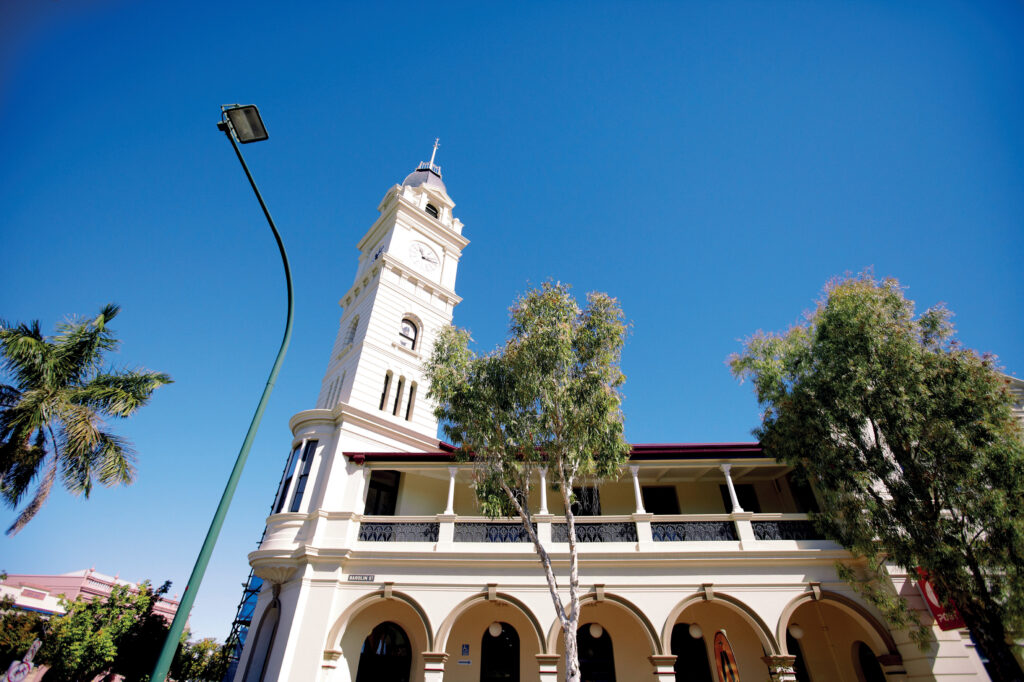
Image credit – Tourism and Events Queensland
Tourism and hospitality are not just economic drivers; they are key elements in attracting long-term residents to regional areas. Bundaberg is a prime example of a community that leverages its tourism assets to draw people not just for visits but to settle down. The AHURI Final Report No. 425 highlights how regions with strong tourism and hospitality sectors often experience faster population growth, and Bundaberg is no exception.
With iconic attractions such as the Bundaberg Rum Distillery, Mon Repos Turtle Centre, and a rich agricultural landscape known for producing world-class produce, Bundaberg has positioned itself as a destination that appeals to a wide range of visitors. But beyond the initial allure, it is the city’s atmosphere and offerings that often convince tourists to make Bundaberg their home. This trend reflects the broader finding that hospitality and entertainment industries contribute to a place’s attractiveness, acting as a magnet for new residents.
Tourism supports local jobs, creating opportunities for workers in the hospitality, retail, and service sectors. For many, a visit to Bundaberg may be the first step in discovering a community that offers not just economic opportunities but an appealing lifestyle. The AHURI report notes that areas with a robust hospitality sector are often perceived as vibrant and inviting, fostering a sense of excitement and liveliness that can prompt relocation decisions.
The ongoing growth in tourism also pushes the development of supporting infrastructure, from improved road networks to enhanced public amenities. These improvements benefit residents and enhance the overall quality of life, making Bundaberg a more attractive place for families, retirees, and remote workers looking for a balanced, fulfilling life away from larger urban centres.
However, the benefits come with challenges that need strategic management. One of the concerns for rapidly growing tourism hubs is ensuring that the local housing market remains accessible. The AHURI report warns that unchecked growth can lead to housing shortages and inflated rental markets, driven in part by short-term holiday accommodations. Bundaberg’s planning must prioritise balanced development to maintain affordability for both new and existing residents.
Moreover, as tourism boosts population numbers, the demand for services such as healthcare, education, and local amenities increases. Addressing these demands means proactive investment in community resources that cater to both permanent residents and seasonal visitors.
To continue leveraging tourism as a driver for growth, Bundaberg can take lessons from other successful regional centres. This includes marketing campaigns that showcase not just the attractions but the lifestyle benefits of moving to the region. It also involves creating policies that balance tourism development with the well-being of residents, ensuring that the community remains inclusive and sustainable.
In essence, Bundaberg’s tourism and hospitality sector is not just about drawing crowds for short-term visits; it’s about creating lasting impressions that encourage people to stay. By fostering a welcoming, vibrant, and well-supported environment, Bundaberg continues to be a region that attracts and retains residents who want more than a vacation—they want a place to call home.
This article, written by Welcome to Bundaberg Founder Gayle Reynolds, is inspired by the AHURI Final Report No. 425 titled *“Place-based drivers and effective management of population growth and change in regional Australia.”* Authored by Caitlin Buckle, Greta Werner, Nancy Marshall, Glen Searle, Nick Osbaldiston, Somwrita Sarkar, Durba Kundu, and Nicole Gurran from the University of Sydney and James Cook University, this report was published in August 2024. It explores key push and pull factors affecting population changes in non-metropolitan Australia and offers valuable insights into managing growth effectively in regional areas.
Reference:
Buckle, C., Werner, G., Marshall, N., Searle, G., Osbaldiston, N., Sarkar, S., Kundu, D., & Gurran, N. (2024). *Place-based drivers and effective management of population growth and change in regional Australia*. AHURI Final Report No. 425. Australian Housing and Urban Research Institute Limited.
